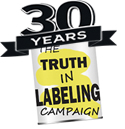MSG
Manufactured vs Natural Glutamic Acid
Ingredient Names Used to Hide MfG

Cosmetics, dietary supplements, and pharmaceuticals
You know those patches that some people wear to deliver meds into their systems -- like nitroglycerin patches for angina? And the muscle pain creams used to relieve certain types of muscle pain? Like Bengay and Arnica cream?
Well, processed (manufactured) free glutamic acid applied to the skin works just like those products do. It penetrates the skin and delivers its ingredients into your system. So it should come as no surprise that processed (manufactured) free glutamic acid (MSG) when applied to the skin can cause adverse reactions in people who are sensitive to it.
You likely know the names of ingredients (most often food ingredients) that contain MSG. But have you identified where those ingredients are hidden in shampoos, conditioners, soaps, lotions, deodorants, hair coloring, and cosmetics that you use? In tooth paste and mouth wash? “Amino acid(s)” and “glutamic acid” (which are inevitably manufactured), are favorites, especially for shampoos.
Pharmaceuticals and dietary supplements often contain amino acids. Don't be fooled by the industry hype that "their" supplements or pharmaceuticals are "natural." Check out these industry-generated claims for yourself. All supplements and pharmaceuticals are manufactured. The individual amino acids in supplements and pharmaceuticals are manufactured.
Particular attention needs to be given to protein powders. "Protein" is not the name of an ingredient. "Protein powder" listed as an ingredient is made up of a group of amino acids (manufactured, of course) that the FDA allows manufacturers to call "protein powder." Beef is a food/ingredient that is labeled "beef" when present in a product. It's not called beef protein. If something is called "beef protein," it is an array of amino acids that have been derived from beef.
At present, soy protein, pea protein, and whey protein are among the most popular protein starting-materials used for manufacture of protein powders. All are made of arrays of amino acids, derived from soy, peas, and whey.
All protein powders contain MSG.

